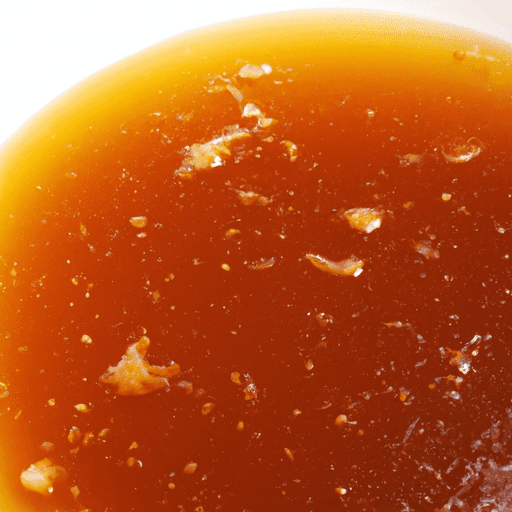The Delicious and Nutritious Low-Sodium Broth
Broths are one of the essential ingredients in a wide variety of culinary preparations. They add depth, richness, and flavor to a dish, elevating it to new heights. While traditional broths are known for their savory, umami taste, the rise of health-conscious cooking has brought a new player to the kitchen - low-sodium broth. In this blog post, we’ll explore everything you need to know about this healthier alternative, from its taste and uses to its nutritional value and interesting facts.
Taste and Flavor
Low-sodium broth, as the name suggests, is a broth with reduced salt content. This results in a milder taste compared to its sodium-rich counterpart. While traditional broths can be quite salty, low-sodium broths let other flavors shine through, allowing the ingredients’ natural tastes to take center stage. The delicate balance of herbs, spices, and vegetables create a harmonious, yet more subtle flavor profile that appeals to those watching their sodium intake.
Common Uses
Low-sodium broth is incredibly versatile, making it a staple in many kitchens. It serves as a fantastic base for soups, stews, sauces, and gravies, providing a depth of flavor without overpowering the other ingredients. It’s particularly handy in recipes that call for a long cooking time, as the reduced sodium content helps prevent the dish from becoming too salty as it simmers. From classic chicken noodle soup to vegetable stir-fries, low-sodium broth can be used in countless ways to enhance your favorite dishes.
Nutritional Value
One of the primary reasons many people turn to low-sodium broth is for its nutritional benefits. Excess sodium in the diet has been linked to various health issues, such as high blood pressure and cardiovascular problems. By opting for low-sodium options, you can reduce your sodium intake without sacrificing flavor. Additionally, low-sodium broth is often lower in calories and fat compared to regular broths, making it a healthier choice. It’s also a good source of vitamins and minerals, including potassium, which plays a crucial role in maintaining a healthy balance in the body.
Interesting Facts and History
The concept of broth dates back centuries, with different variations found in cultures worldwide. Broth has been consumed for its nutritional and medicinal values, as well as for the sheer pleasure it brings to the taste buds. In traditional cooking, broth was often prepared by simmering bones, vegetables, and herbs for hours, allowing all the flavors to meld together.
The popularity of low-sodium broth has surged in recent years as more people become conscious of their food choices and aim to reduce sodium intake. Food manufacturers and home cooks alike have responded to this demand by offering a wide range of low-sodium broth options, catering to various dietary preferences and restrictions.
The availability of low-sodium broth has revolutionized the way we cook, enabling us to strike a balance between culinary satisfaction and health. With its delicious taste, versatile uses, and nutritional benefits, low-sodium broth has become an essential ingredient in the modern kitchen.
It’s worth noting that while low-sodium broth offers a healthier alternative to regular broths, it’s essential to consider your individual dietary needs and consult with a healthcare professional or nutritionist if necessary.
Conclusion
Low-sodium broth is a game-changer for health-conscious individuals who strive to enjoy flavorful dishes while keeping their sodium intake in check. Its mild, yet delicious taste allows the natural flavors of other ingredients to shine, providing endless possibilities in the kitchen. With its numerous culinary applications and health benefits, low-sodium broth deserves a spot in every food lover’s pantry.
So go ahead and grab a carton of low-sodium broth on your next grocery run. Your taste buds and your body will thank you for it!
Low-Sodium Broth:
Origin: Broth has been used in cooking for centuries, with the exact origins difficult to trace. However, it is believed to have originated in ancient times as a way to preserve and utilize leftover bones and meat scraps.
Common Uses: Low-sodium broth serves as a flavorful base for a wide range of culinary applications. It can be used as a soup base, as a liquid for cooking grains or legumes, as a stock for sauces and gravies, or as a flavorful addition to various dishes. It is especially sought after among those who are following a low-sodium or heart-healthy diet.
Nutritional Benefits: Low-sodium broth provides an array of nutritional benefits. It is typically low in calories and fat, making it a suitable option for those watching their weight. It is also a source of protein, which is essential for the body’s growth and repair. Additionally, broth may contain various nutrients that are extracted from the bones or vegetables used in its preparation, such as calcium, phosphorus, and vitamins.
Unique Properties: The main characteristic of low-sodium broth is its reduced sodium content. Traditional broths can be high in sodium due to the use of salt for seasoning, but low-sodium versions are formulated to have significantly lower sodium levels. This makes it a favorable option for individuals following a low-sodium diet or those looking to reduce their overall sodium intake. The flavor of low-sodium broth can be enhanced with herbs, spices, or other seasonings to compensate for the reduced salt content.
Historical Significance: Broth has been a staple in many cultures throughout history. In ancient times, it was valued for its ability to use leftover scraps and transform them into a flavorful and nourishing liquid. Various regions around the world have their own unique broths, such as French bouillon, Chinese bone broth, and Japanese dashi. Over time, broth has evolved to accommodate different dietary needs and cultural preferences, including the development of low-sodium options to cater to specific health requirements.




Use the share button below if you liked it.
It makes me smile, when I see it.